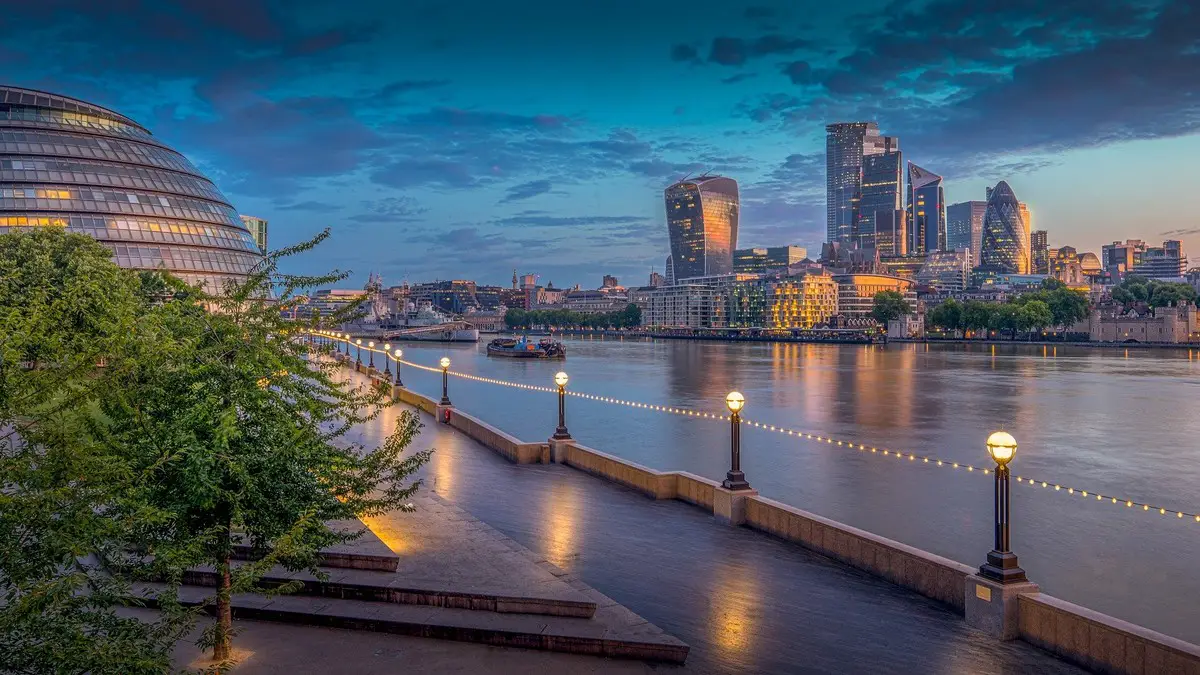NLA London Tall Buildings Survey 2022, UK Capital Skyscraper Architecture, Architects, Design News
NLA London Tall Buildings Survey 2022 News
25 Apr 2022
NLA London Tall Buildings Survey 2022 Guide
London Tall Buildings Survey Provides Snapshot of London’s Evolving Skyline
• New London Architecture (NLA) and Knight Frank launch ninth annual London Tall Buildings Survey
• New planning applications for tall buildings fell 13.3% in 2021 compared to 2020
• Record level of permissions granted for tall buildings last year, increasing by 26% in 2021 compared to 2020
• The pipeline of tall buildings is slowly decreasing, contracting by 1% YoY in 2021 from 587 to 583
• 109 tall buildings schemes are now actively under construction across the capital
• There is a continued shift towards outer London, with 88 tall buildings in Zones 3 and 4, and 41 in Zone 5
• Out of London’s 33 boroughs, 26 have a tall building pipeline
• 341 tall buildings currently have planning permission to go ahead and are awaiting construction, and a further 71 have been approved at Planning Committee but are yet to sign S106 agreements
• Nearly 82,000 new homes are estimated across London’s entire tall buildings pipeline, or a little under two years’ worth of housing need based on GLA requirements of 52,000 new dwellings per annum
• Commercial buildings account for 13% of the total pipeline
• The data suggests that 2022 could be a bumper year for completions, with 46 tall buildings expected to complete this year – a 35% increase on the 2021 total
Monday 25th April 2022 – The results of the 2022 edition of the annual New London Architecture (NLA) London Tall Buildings Survey, published in partnership with global property consultancy Knight Frank, indicate a downward trend in London’s tall buildings with applications down 13.3% over the previous year.
The annual survey – now in its ninth year – provides the only comprehensive analysis of tall buildings in London and offers a snapshot of how the capital’s skyline is evolving. The survey includes all buildings 20 stories and above, which are either in planning or under construction. For residential schemes, current and historic data has been supplied by Molior London and commercial building data comes from Knight Frank’s proprietary database.
According to the NLA and Knight Frank, there are signs of a slowdown of tall buildings in London. The pipeline of 20-storey plus buildings in the capital contracted 1% year-on-year in 2021, while the number of new planning applications put forward by developers as well as new construction starts, both bellwethers for the state of the market, came in lower than long-term trends. Conversely, planning decision makers acceptance of tall buildings does not appear to have been dampened as evidenced by the record level of planning approvals granted.
Peter Murray, Curator in Chief at New London Architecture, said: “Signs of a slowdown in this year’s results is not entirely unexpected; a combination of the uncertainties created by the pandemic, rising build costs, new safety measures, environmental regulations and increased affordable housing obligations in recent years have imposed greater scrutiny on high-rise development and it has had a knock-on effect.”
Stuart Baillie, Head of Planning at Knight Frank commented: “This year’s figures should not be interpreted as the end of tall building in London. Quite the contrary. The survey points to a record level of permissions being granted last year, up 26% on 2020, and the number of completed projects was robust. Context is essential; the future pipeline may have contracted slightly, but it remains significant. In total, there are 583 tall buildings which are proposed or approved with 109 of those currently under construction, 28% and 19% higher than back in 2016 respectively.”
What is coming through the planning system and out of the ground is increasingly across the outer London boroughs (Zones 3, 4 and 5), as well as for the Build to Rent sector, mirroring the trend in the wider new-build housing market.
Key statistics from this year’s research include:
• Developers submitted 72 planning applications for tall buildings in 2021, down 13.3% on a year earlier and the third consecutive year application numbers have dropped. Submitted applications are 37% lower than the market peak in 2018. Of the applications submitted in 2021, a total of 12 (17%) were granted full planning permission the same year and a further five were approved at Planning Committee but were yet to sign S106 agreements by 31st December.
• The average height of tall building applications put forward in 2021 was 28 storeys, though this varies by borough with an average of 31 storeys for applications across inner London boroughs to an average of 25 storeys in outer London.
• There were 98 full planning permissions granted in 2021, 36% higher than in 2020, and the highest annual figure on record. Some 56% of permissions were granted in outer London boroughs, including a combined 34 in Newham and Brent. In part, the high level of permissions granted reflects the bumper crop of applications submitted in 2018 and 2019 which continue to work their way through the system with 51% of consents last year for plans submitted in 2019 or earlier. However, it also suggests a willingness of Planning Committees to approve tall building proposals, either as standalone schemes or as part of a larger masterplan. Some 7% of permissions were for commercial buildings, down slightly from 13% the previous year.
• In 2021, a total of 29 tall buildings commenced construction. While this was an increase on 2020, it represents the second lowest level of new starts for tall buildings across London since 2013. A drop in new starts is consistent with the decline seen in the wider London development market over the last couple of years, while rising build costs and ongoing supply chain disruption is likely to have put a hold on some projects last year especially given the higher costs associated with building tall. We expect future surveys will register a slowing in delivery rate as the pipeline works its way through over the next three to four years.
• In total, 34 residential and commercial tall buildings were completed in 2020, slightly below the 37 which completed last year and fewer than the 52 which were expected to complete according to last year’s survey. As in previous years, the data suggests that tall buildings are an increasingly deliverable form of development outside of the historically ‘prime’ areas, with 15 buildings completed in outer London in 2021, up from 10 in 2020. Notably, some 35% of the completions last year were for the BTR market, up from 24% the previous year.
• The data suggests that 2022 could be a bumper one for completions, with 46 tall buildings expected to complete this year – a 35% increase on the 2021 total.
Stuart Baillie of Knight Frank added: “It should be London’s ambition to be a world leader in delivering exceptionally-designed and highly sustainable tall buildings – and the construction industry plays a vital part in achieving this goal. With this in mind, we should not focus on the quantity of tall buildings coming forward, but rather the quality. It is crucial that any tall building delivered not only positively contributes to the economy and sustainability of the capital, but also meaningfully adds value to its local context.”
Peter Murray of NLA concluded: “What is a tall building? The NLA survey has always defined a tall building as over 20 storeys, this is the height of many local authority residential towers which formed the majority of taller buildings in London up until the recent boom in the sector. We retain this definition, both because we wish to enable comparisons with previous studies but also because we think it is a sensible general definition. In the current London Plan context is seen as important and in low rise areas anything over six storeys can now be described as a tall building. In the different context of Old Oak the Development Corporation says anything above 15 storeys is tall.”
NLA London Tall Buildings Survey 2022 Background
Methodology
Consistent with previous years’ London Tall Building Surveys, tall buildings have been defined as buildings of 20 storeys or above in height that are at various stages from application to construction. The data for 2021 refers to the period from 1st January 2021 until 31st December 2021. For residential schemes, current and historic data has been supplied by Molior London. ‘Completion’ refers to the point at which a building can be occupied. Where applicable, for larger sites, application, permission and start dates refer to individual buildings. Commercial building data comes from Knight Frank’s commercial building database. Please note that our data is dynamic and can be subject to revisions. Consequently, some figures may not be identical to those in previous editions.
Tall Buildings programme
The research forms part of the NLA’s year-round Tall Buildings programme, with Programme Champion and research partner Knight Frank.
New London Architecture (NLA) is an independent, purpose-led membership organisation for everyone with an interest in London’s built environment. Its purpose is to improve the quality of people’s lives by making London a better place to live, work and visit. Its vision is to become the world’s leading centre of excellence for the built environment. NLA’s activities are broad-ranging and include research, publications, events, exhibitions, tours, learning programmes, websites and social media platforms, awards and competitions, the world’s largest architecture festival and public galleries that feature large interactive scale models of London.
Knight Frank LLP is the Programme Champion of the 2022 NLA London Tall Buildings Survey. Knight Frank is the leading independent global property consultancy, serving as our clients’ partners in property for 125 years. Headquartered in London, Knight Frank has more than 20,000 people operating from 488 offices across 57 territories. The Group advises clients ranging from individual owners and buyers to major developers, investors and corporate tenants. For further information about the Company, please visit knightfrank.com.
NLA London Tall Buildings Survey 2020 Guide
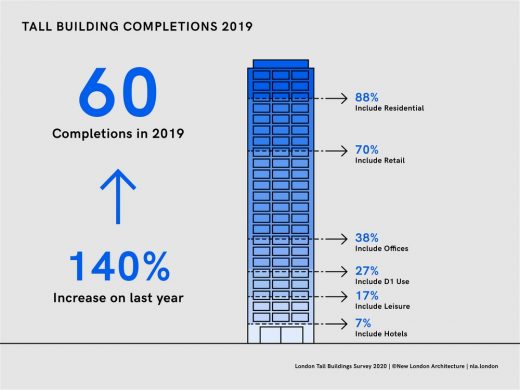
image courtesy of NLA
NLA London Tall Buildings Survey 2020
NLA London Industrial & Logistics Sector Report
NLA London Industrial & Logistics Sector Report
New London Architecture, The Bldg Centre, Store St, Bloomsbury, London, London, WC1E 7BT, United Kingdom
New London Skyscraper Designs
40 Leadenhall Street Skyscraper
Design: Make Architects
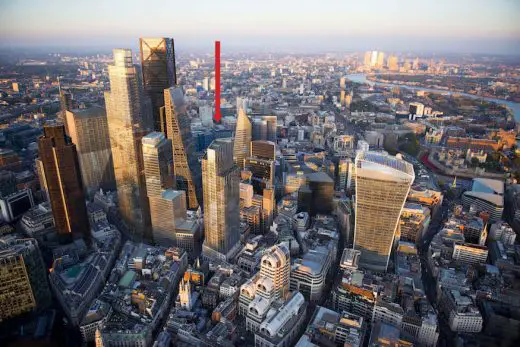
image from architects
1 Leadenhall Tower
Walkie Talkie Building, Fenchurch Street
Design: Rafael Vinoly Architects
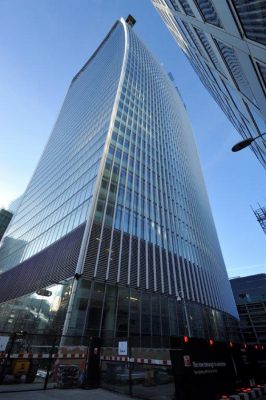
photograph © Nick Weall
Walkie Talkie Building London
Spire London Docklands Tower
Design: HOK, Architects
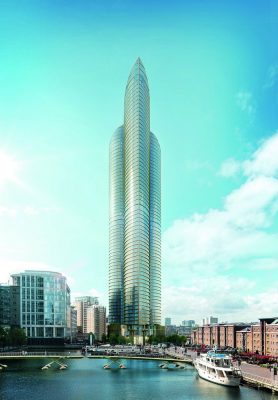
image from architect
Spire London Docklands Tower
60-70 St Mary Axe
Design: Foggo Associates Architects
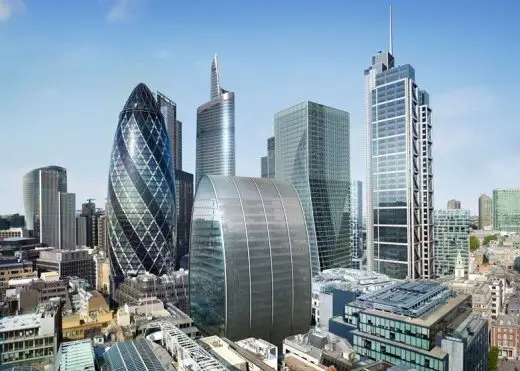
image courtesy of the architects
60-70 St Mary Axe Skyscraper
1 Undershaft Tower
Design: Eric Parry Architects
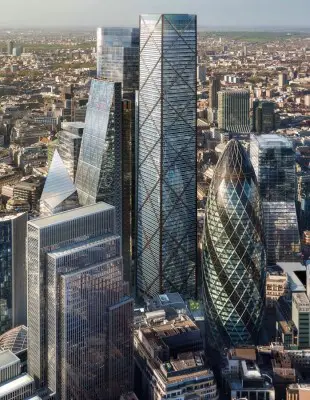
image : DBOX, courtesy Eric Parry Architects
1 Undershaft Tower London
Design: Kohn Pederson Fox – KPF
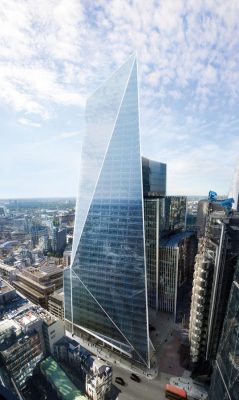
The Scalpel City of London Skyscraper
Ludgate House & Sampson Houses
Architect: PLP Architecture

picture from architects
257 City Road, Islington, north east London
Design: UNStudio
257 City Road Tower
The Shard
Design: Renzo Piano Building Workshop
The Shard London
122 Leadenhall Street
Design: Rogers Stirk Harbour + Partners
The Cheesegrater
Location: London, England, UK
London Architecture
London Architecture Links – chronological list
London Architecture Walking Tours
Tall Buildings
Buildings / photos for the NLA London Tall Buildings Survey 2022 page welcome

